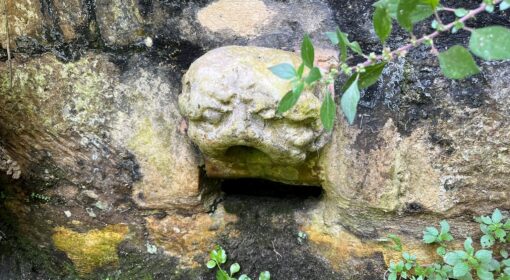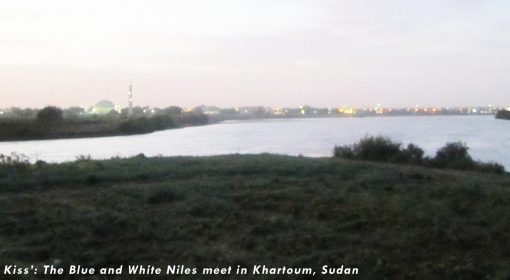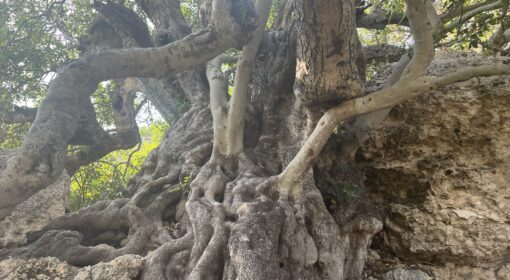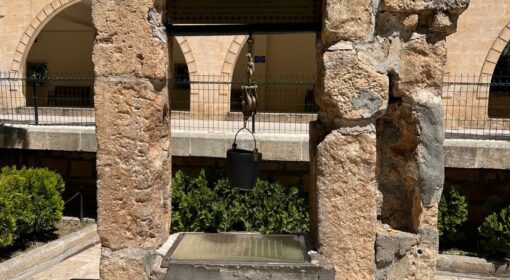By: Frank van Steenbergen
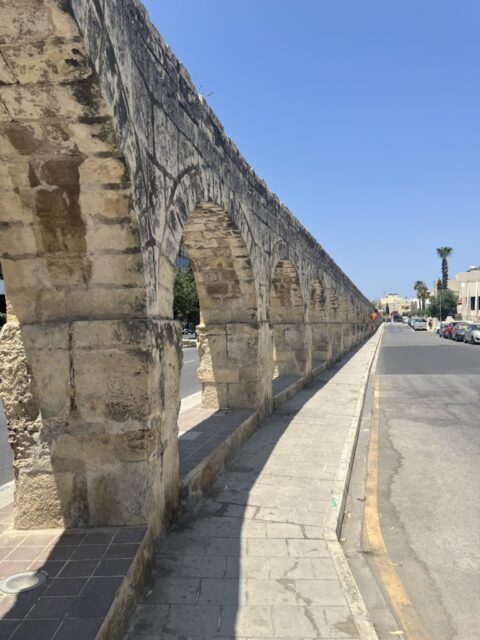
To construct an aqueduct is a matter of both ingenuity and of will power: to get it right and to get it done. This is how the Wignacourt Aqueduct in Malta came about more than 400 years ago, serving Valetta the capital of Malta, its harbours and surrounding area.
The Aqueduct runs over 16 kilometres collecting water from gallery springs in the Dingli and Rabat hills, carried through buried conduits to Attard town. It is here that the Aqueduct starts. The Aqueduct then takes the spring water over a series of landscape depressions to Valetta and its suburbs, from where it is channelled in closed conduits again. This was the lifeline for the marvel capital of Malta – Europe’s first planned city, developed after the Great Siege in 1565 whereby the Knights Order of Malta were greatly outnumbered, but miraculously withstood the onslaught.
The Knights Order ruled Malta from 1530 to 1798. Their order – also called ‘Military Hospitaller Order of Saint John’ – had its roots in the medical care of pilgrims visiting Jerusalem. The order was essentially a union of nobility from eight different parts of Europe (England, Germany, France, Provence, Auvergne, Italy, Aragon, and Castille/Portugal – called ‘langues’). They were led by a Grand Master, chosen by a sixteen-member Council of the Electors. Each ‘langue’ group would have one religious and one military person in the Election Council. The Council was put together by a triumvirate: these initial three members would select the fourth member; the four then the fifth member, and so-forth till all 16 voting members were selected. In conclave by secret ballot, requiring at least a 11/16 majority, the new Grand Master would be chosen from a list of nominees, one nominee for each langue group.
One of the outstanding Grand Masters was Alof de Wignacourt, from the nobility in Piccardia (now Northern France). He had been part of the Great Siege, and the sea-battle of Lepanto then had several appointments in the Order – Treasurer and Head of the Infermeria – the Order’s thousand bed hospital: at that time by far the most advanced medical facility in Europe. In 1601 Alof de Wignacourt was unanimously elected as Grand Master.
Grand Master de Wignacourt was a man of getting things done, of capacity to act and successfully deliver. Soon after he assumed power, De Wignacourt averted a food crisis on the island, by capturing enemy grain ships. He constructed during his reign four major strategic forts and organized the defence of the island against invader. Over the grotto where Saint Paul was mentioned to have stayed after his shipwreck during his three months stay on Malta, he established a collegiate church in 1619 and a college of chaplains of the Order.
Yet his piece de resistance was the water supply to the thirsty new capital of Valetta. Since its establishment, Valetta relied on rainwater collection in cisterns, that were compulsory part of each building. Several drought years demonstrated the inadequacy of this system. One of earlier Grand Masters, Martin Garzez, started with a new water supply system in 1596, but construction was suspended, as funds soon ran out.
In 1610 De Wignacourt had the work on the Valette water supply restarted under the direction of a Jesuit engineer, Padre Natale Tomasucci. He developed the first section – the improved springs and the conduits. The work however got stuck – it proved too difficult to traverse the terrain and many sections were leaking. Tomasucci gave up and even disappeared from this island. Grandmaster De Wignacourt pursued and in 1612 had Bolognese hydraulic expert Bontadino de Bontadini take over the project, assisted by a Maltese Master of Works Giovanni Attard and two Sicilian engineers. More than 500 construction workers were employed Bontadini has a working design and applied watertight ‘pozzalano’ cement sealant, using volcanic ash from South Italy. The water supply system was completed and inaugurated in April 1615 – conveying 1400 cubic meters of water every day.
The largest part of the cost of the Aqueduct was paid by Grandmaster De Wignacourt himself. This was from his ‘goia’: it was common for a Knight of Malta, and of Grand Masters in particular, to bequeath their property during their life or after their death to the Order.

Part of the aqueduct were water towers. These acted as holding tanks for water traveling through the aqueduct. This provided buffer capacity, allowing a steady and consistent supply even if spring output fluctuated. The elevation of the towers also helped to regulated water pressure, which was crucial for distribution over the large distances and varying elevations. Several water towers still stand – including the ornamental one in Floriana, topped by the Wignacourt lily-flowers coat of arms and equiped with a drinking water trough for horses. It remembers the engineer in charge of the project with this text:
‘From the turrent decorated with a lily, I raise my head to see in the City the fountains of the water of life’.
The Wignacourt aqueduct is an aqueduct of will power – pursued in hard times, restarted not diverted, and constructed by personal effort and means. It is a type of leadership that is often missing – of grit and sacrifice, unselfish, pious and magnaminous, of basically getting the work done for the common interest. We all yearn for this – it is a yardstick that we should judge current leaders against, that appear to be braggers and influencers not do-ers or benefactors. Though De Wignacourt passed away in 1622 and his family name has died out, the aqueduct still carries his name, and the lily-flowers stand firm.
